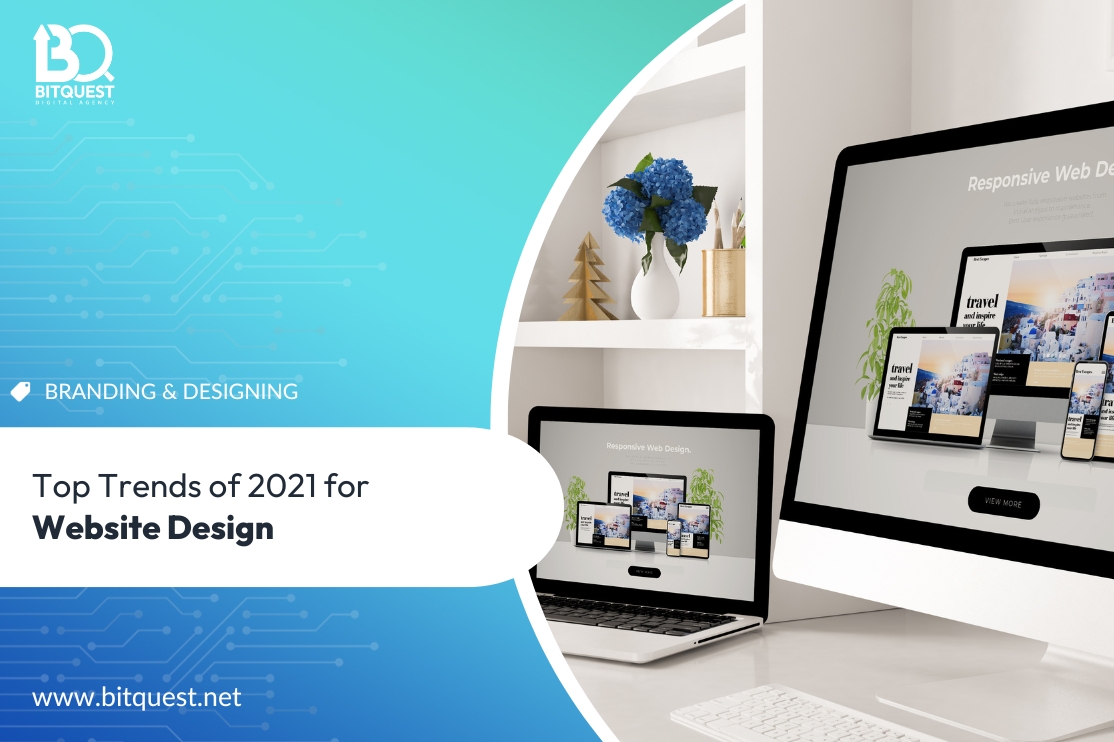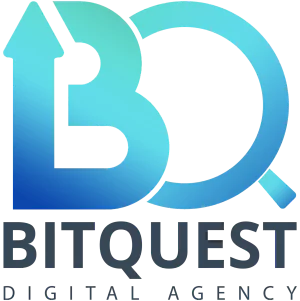Latest website design trends for 2021

5 March 2021
Each year's web design trends promise to beam us into the science-future of our dreams, seeing that they are based on technology. But the 2021 prediction we received from our community of web designers around the world is the opposite. The web design trends of 2021 appear to share a common theme: Instead of aspiring to high-tech fantasy, web designers are seeking new heights of realism. They are mixing digital and the ordinary as before, and it shows how much of everyday life has become a part of websites. As such, the following 6 web design trends for 2021 are literally taking a breath in the digital world from BitQuest's top website designer., Best website development company in Australia.
1. Retro Touch
To say that we are fully immersed in the digital world would be an understanding. But of course, it is not easy to leave the digital world when the web makes our lives and our work so easy (many times). Yet when we look back today, we often remember a time when things used to be just a little different. There, we are not going right now a few years ago, but even beyond that, designers have used everything from floppy disks to vintage stamps to bring a retro touch to their designs. After a long reign of flattened beauty, we are now looking for new and contemporary ways to add depth to our online experiences, so things used everywhere on the web may be in fashion again in the early 2000s There are - things from personal life, a little more bizarre and less predictable layouts, textures, patterns, and even pixel art.
2. Parallax scroll animations
Parallax scroll effects have been a trend in website design for years, and in 2021 we hope to see more subtle and creative exploration with parallax. Remember that too much movement in parallax effects can be harmful to people with vestibular disorders because the confusion of depth and movement can lead to disorientation and dizziness. Not every parallax animation has to make grand gestures on the screen. We have also seen more subtle applications.
3. 3D visuals everywhere
With the advent of high-resolution screens, the 3D design has come a long way from the blocky and beveled edges of geo cities. We are seeing high-quality 3D scenes seamlessly woven into web designs. Instead of being distorted, they are adding to the overall user experience. Creative agency Sennape throws in a dash of depth with 3D elements on its website. There is a good sense of harmony between all the design elements here. This is a perfect example of how 3D can create an ever-larger effect, in a more minimal layout.
4. Scrolling transformations
When users scroll, they are doing more than navigating the page: they are interacting. The physical actions they perform in real-life - moving their fingers over the mouse - cause a screen reaction. Engagement is a form of engagement, and when users are involved in the things that are happening, they are more likely to be interested and engaged. Scrolling is one of the most subtle forms of interaction, and as such, the 2021 web designers are giving visual feedback to users when scrolling. This can range from full-color scheme changes to complex animated changes to bulk changes to the layout. All in all, web designers are taking time out and making each scroll feel like a new page - sometimes even a new website.
5. Abstract art compositions
Abstract shapes, especially those geometric primates such as squares and circles, can appear as simple, minimal, and restrictive. However, in 2021, web designers are incorporating them into complex, expansive creations that operate out of freedom. In most cases, these abstract art arrangements are replacing stock photography and figure illustration. While they may contain images of people, they still evoke emotion without them. His bursting compositions feel energetic, and many of his vibrant colors are infectiously warm. The results are web pages that feel familiar and alive, even in the absence of a familiar human face.
6. Comfortable colors
Given the increasingly digital nature of the job market these days, most people spend most of their time on computers. Because of this, it is not uncommon for users to experience eye strain after staring at a screen for a long time. Web designers keep this in mind with color schemes that focus on being easy on the eyes. This in part reflects the popularity of last year's Dark Mode trend, which countered the heavy whitewashing that dominates screen-based media. In 2021, web designers will be thinking outside the two extremes of darkness and light. They are finding the middle ground in soft color palettes, such as nutritious greens, pastel blues, warm browns, or light pinks. These not only make the website colors wring less than pure black or pure white, they naturally induce calm and relaxation. This trend overall is an indication of an expectation that future web designers may be more concerned with access and comfort than dramatic innovation.
Wrapping Up
The world has changed, and so has our role as designers. We never know what the future will bring, but ultimately, we shape it, and we can contribute to more positive change for the world than we think we can. So maybe next year, when we see the trends coming in digital design, we will bring these trends to the web for the first time. To know more visit our website (click here) or contact us to know the different designs available for your web page.

